| Columns Retired Columns & Blogs |
A wonderful and informative review - as always.
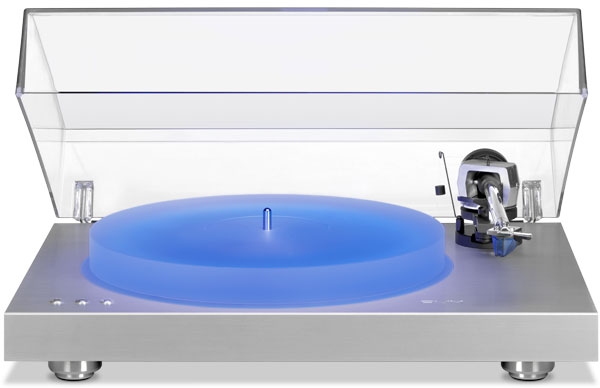
It doesn't take a forensic turntable scientist to figure out who manufactures both of those turntable models. Clearly, Pro-Ject does (footnote 2)—although some audiophiles might recognize only a few key parts. Other elements, especially the two different tonearm models, may appear unique to AVM, having been built to their specs.
For me, the first hints that the AVM Rotation R 2.3 came from Pro-Ject's Czech Republic factory were its carton and packaging. The second was its dustcover (even though this was a little more "deluxe" than the Pro-Ject norm and sported an angled top). The third was the phono cables.
Beyond that, on the surface at least, this 'table appears to be a unique AVM design, built to spec. I speculate that the built-in speed controller is probably identical or similar to those built into some Pro-Ject turntables.
As you can see from the measured speed accuracy and consistency (see the graphs), this $4990 'table spins at the correct speed, and its consistency rivals that of far more expensive turntables.
An inboard DC motor topped with a crowned aluminum pulley drives a heavy, well-machined aluminum subplatter/bearing spindle assembly—this is similar if not identical to what's now being used on Pro-Ject's new Classic EVO turntable—via a flat belt.
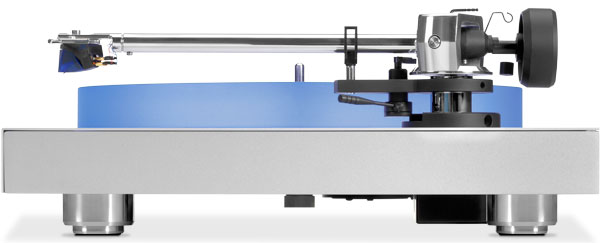
The spindle itself and the permanently lubricated bronze bushing in which it rides appear familiar and could be longer versions of ones usually found on less costly Pro-Ject turntables—as opposed to the ceramic ball–equipped inverted bearings found on some of the company's more costly designs. However, as the measurements indicate, the design and execution are precise, of very high quality, and contribute to the 'table's impressive speed consistency.
The R 2.3's inert plinth is made of HDF (high density fiberboard), covered with a sleek, superattractive aluminum "cover frame" that looks totally AVM. The 'table's acrylic platter, which my electronic postal scale says weighs 5.5lb, rides in a recess that's illuminated by the blue glow of a series of LED lights; the glow's intensity can be set to either cool or bright. The combined weight of the platter and plinth is specified as 8.5kg (close to 19lb).
AVM appears to have put considerable effort into the gimbaled-bearing aluminum tonearm (AVM's own design), which features an impressively massive yoke and what feel like low-tolerance, high-quality bearings. The 9" arm's effective length is 230mm, with a spindle-to-pivot distance of 212mm (à la Linn), which results in an 18mm overhang.
The headshell is of the slotless, sliding–single-point design that originated with brilliant tonearm designer Frank Schröder. It is elegant but, in this implementation, doesn't allow for zenith adjustability; azimuth and VTA/SRA are easily adjustable. A weight at the end of a piece of monofilament applies antiskating force.
A damped 120gm counterweight accommodates cartridges weighing between 5 and 9.5gm. Adding the supplied insert produces a 158gm counterweight capable of handling cartridges up to 18.5gm. VTF can be set to between 0.35 and 3.5gm. The arm's effective mass is spec'd at 13.5gm. A magnet embedded in the rest locks the arm securely in place.
Setting up and using the R 2.3 was straightforward, thanks in part to an excellent, well-illustrated glossy paper instruction manual. My only complaint is that the power umbilical connecting the turntable to the wall-wart power supply was not quite long enough to reach from the top of my "normal"-height rack to a power distribution strip on the floor below. Otherwise, with its plinth-mounted pushbutton speed selection (33.3 and 45rpm), the R 2.3 is a pleasure to use.
I ran the R 2.3 using a few cartridges priced appropriately for a $5000 turntable, including the $1000 Gold Note Donatello Gold moving-coil cartridge and Goldring's $1495 Ethos MC. I also auditioned an Ortofon A95, though it's priced beyond what I think most 2.3 buyers will use with it. I did it because I figured the arm was good enough to handle the A95, and it was.
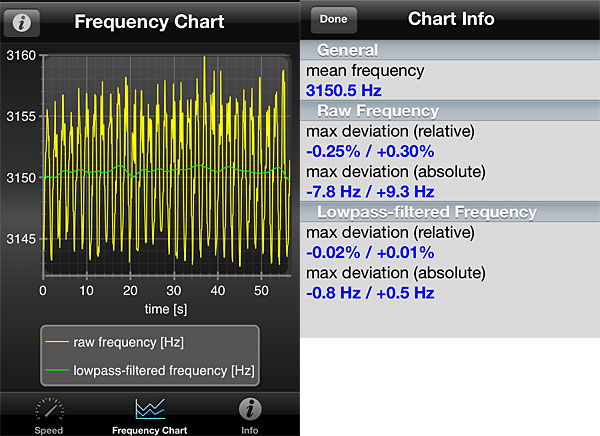
When a turntable runs at the correct speed with excellent speed consistency, you can be assured of a pleasing and relaxing analog ride—and that was the case here.
I had used the Gold Note and Goldring cartridges for my review, in the September 2019 Stereophile, of the TechDAS Air Force V turntable, and both produced a generally warm, even-handed spectral balance. In my AnalogPlanet review of the Gold Note, I wrote, "it was not a 'detail-resolving' champ, nor the fastest kid on the block but its timbral balance was unerringly neutral and top-to-bottom well extended with no obvious tonal lumps or bumps. Transparency was also impressive."
The Gold Note on the R 2.3 produced similar spectral-balance performance as it had on the Air Force V, though transients were definitely softer and less well defined. (In my experience, acrylic platters generally produce soft sound and somewhat restricted dynamics.) The bottom end was equally so, though well enough controlled and not bloated, which wasn't surprising given the high-density fiberboard plinth and the arm's construction.
On Christopher Parkening's Parkening Plays Bach (EMI HQS 1316), an album of transcriptions for guitar first released in 1971, the R 2.3 expressed well the classical guitar's warmth but softened and blurred somewhat the transient clarity. Still, without comparison to more costly rigs, the R 2.3 produced a pleasingly uncolored sound that allowed the two modestly priced cartridges to accurately express themselves. The A95's detail-retrieval abilities and transient "snap" were MIA, though—but who's putting a $6000 cartridge on a $5000 turntable anyway?
On the other hand, Speakers Corner's reissue of the Sibelius Violin Concerto in D minor, Op.47, with David Oistrakh and Eugene Ormandy conducting the Philadelphia Orchestra (Columbia/Speakers Corner MS6157), was sensationally sweet, smooth, and transparent (though I'll still take Heifetz's performance with Hendl conducting the CSO—RCA LSC-2435—for music and sonics). Columbia classical recordings are wildly hit or miss; this one is a hit, though the violin is larger than life. This record, played back on this turntable, delivers the rich, warm experience often heard live and rarely experienced from the digits.
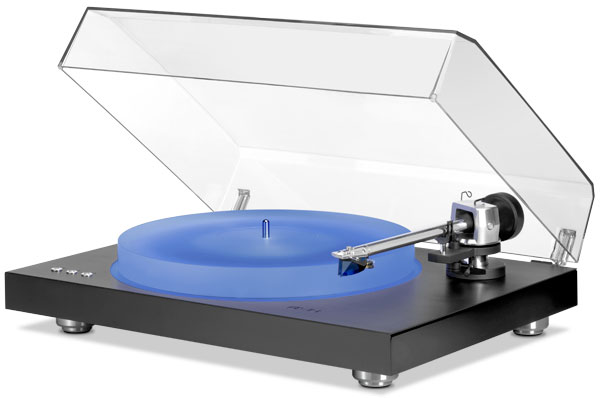
Overall, then, AVM's R 2.3 strikes me as a well-designed and -built, well-performing, sexy-looking turntable, aimed more at owners of other AVM products who want aesthetic consistency (à la what Clearaudio builds for McIntosh), rather than at someone outside the AVM loop looking for the most performance for the buck. That said, if you like the looks, you'll probably also like the sound.
To someone just jumping in, the R 2.3 certainly performs well enough to communicate how sonically satisfying vinyl can be, but when I look at something like Pro-Ject's own $4299 Xtension 10, which features a carbon-fiber arm, 12.5lb sandwiched metal alloy platter, and inverted ceramic ball bearing, and which weighs close to 45lb . . . well, you get the picture.
Miyajima Labs Destiny MC phono cartridge
In the esoteric world of luxury cartridge packaging, Miyajima Labs (footnote 3) may have just won the gold medal. Open its particularly attractive wood box and you'll find the Miyajima Destiny presented on a carved turntable, next to which is a carved tonearm. The mounting hardware resides beneath. It's a cool presentation.
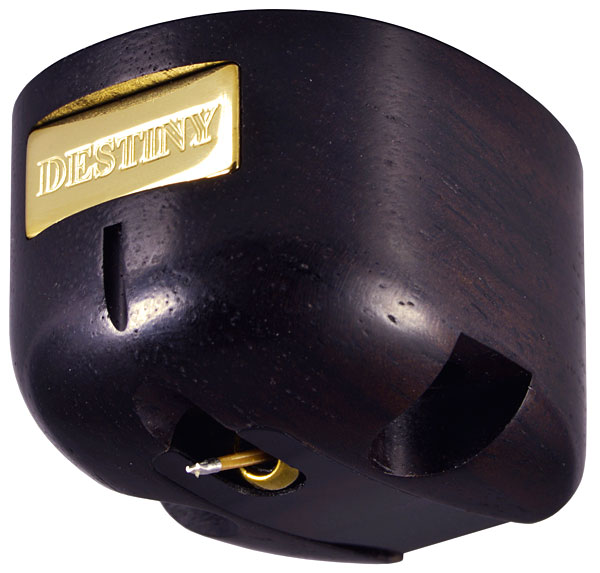
The new Miyajima Destiny ($7500) does not depart far from Miyajima design orthodoxy: It's a unique-to-the-brand "cross ring" moving-coil design that, among other features, places the rubber dampers in front of its nonmagnetic coil former. (Most MC cartridge designs put the damper behind the coils, which makes the rubber damper the system's fulcrum—and possibly limiting dynamics, footnote 4).) The Destiny and the less costly Miyajima Madake and Madake Snakewood cartridges (footnote 5) are in most ways internally identical—at least based on the specifications. The motors of all three are housed in sculpted wooden bodies of African blackwood. All specify a 2.5gm tracking force, 16 ohm internal impedance, output of 0.23mV, a frequency range of 20Hz–32kHz, and a low compliance of 9×10–6 cm/dyne. All use a specially processed, extremely stiff and resilient tapered bamboo cantilever, to which is attached a metal ferrule and a nude diamond stylus.
The cartridges differ in mass and in stylus geometry. The Madake cartridges weigh 9.7gm, the Destiny 13.3gm. The Madake is fitted with a Shibata stylus; the Destiny's stylus is a somewhat less severe line-contact profile. I believe they are otherwise identical.
Over the past few months, I've used the Destiny with three different phono preamps: the CH Precision P1/X1, the Ypsilon VPS-100 (with the MC-16L step-up transformer), and, most recently, the Sutherland Phono Loco phono preamp, also reviewed this month.
Footnote 2: As it turns out, AVM's turntables are manufactured by the EAT division of Pro-Ject's factory. Speaking of Pro-Ject, if you're unfamiliar with their formidable machining and manufacturing capabilities, watch this tour of their new facilities just outside of Vienna and in the Czech Republic here.
Footnote 3: Miyajima Laboratory/Otono-Edison, 1-45-111, Katae 5-chome, Jounan-ku, Fufuoka 814-0142, Japan. Web: miyajima-lab.com. US distributor: Robyatt Audio. Web: robyattaudio.com.
Footnote 4: Rather than filling the entire column with the complete description, I'll suggest you watch the excellent animated explanation at Miyajima-lab.com/e-stereo.html. I just wish someone who speaks both good Japanese and good English would sort through and clean up the text on that site, which includes such technical descriptions as It is fixed through a rubber damper in York. Say what?!
Footnote 5: See Stereophile's December 2014 and April 2018 issues, respectively.

A wonderful and informative review - as always.

Great Phono Sutherland Preamplifier

Michael, how would you compare the Phono Loco (or Little Loco if you had chance to check it out meantime) to the Channel D's Lino C and (I know this is a different animal but...) to the PS Stellar Phono?